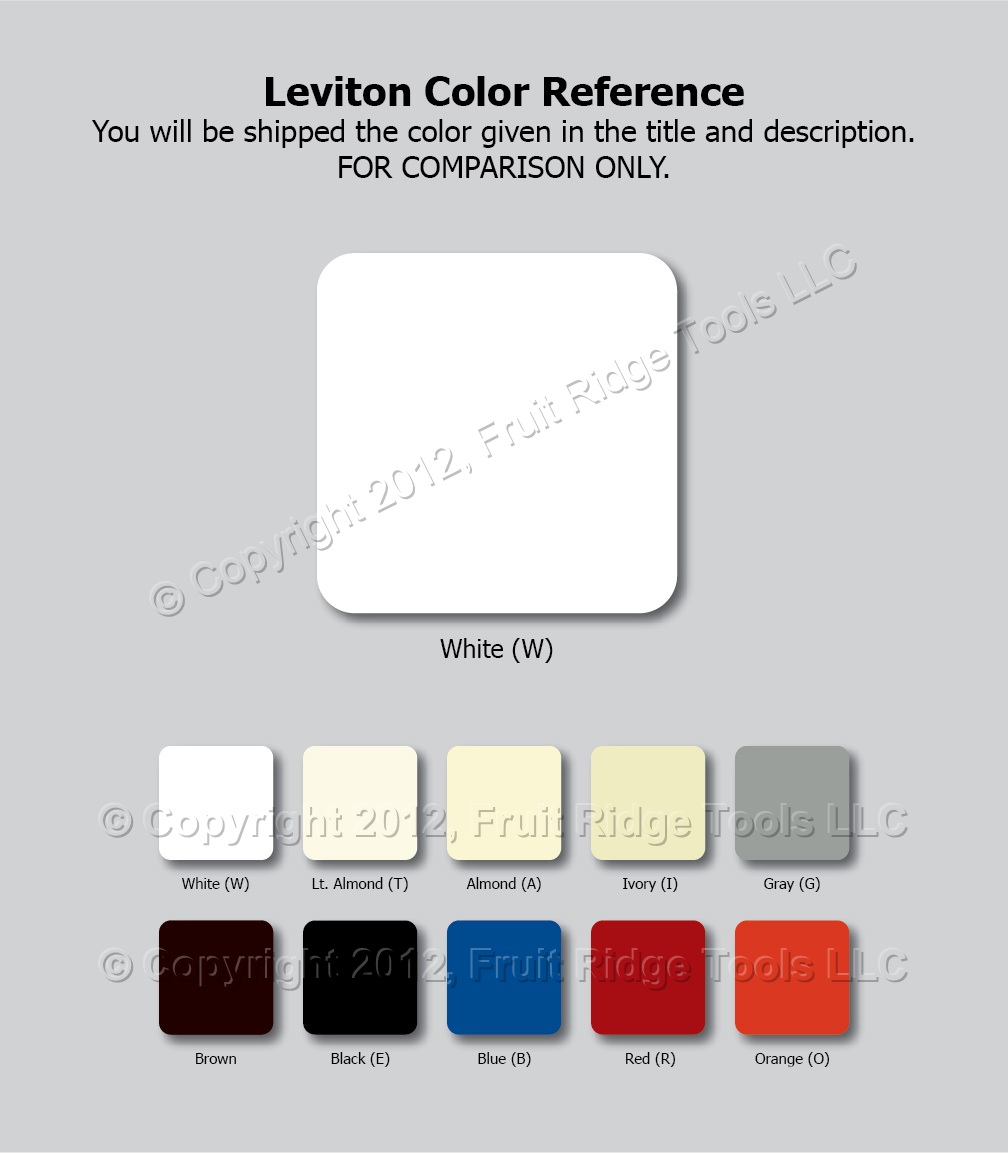- Home
- Blog
Blog
Posted on Apr 2nd 2015
We here at Fruit Ridge Tools understand that color matters. Whether you are replacing an existing color scheme, matching an item you already have, or updating to match a new paint or wall paper, the color is going to be a significant factor in your purchase. Colors for electrical supplies are for the most part standardized across the industry. The main colors are Black, Brown, Ivory, Almond, Light Almond, and White. We provide a color reference chart in almost all of our device listings to show you the relative differences between them. While the color reference has been color matched as close to possible, depending on the material of the device (plastic or nylon) as well as your monitor's color settings, the installed appearance of the color may differ from what you see in the reference. Here is a brief description of the main colors used as well as the color palette we include in many of our listings. We have included common suffixes for part numbers for each color, however these are not exhaustive. Hopefully it provides some insight in your decision and makes the purchasing process easier.
Materials
A discussion of wallplate colors would not be complete without some background on wallplate materials. Material will affect the appearance of each respective color due to the difference in sheen. Plastic wallplates come in two varieties: regular plastic (aka thermoset or breakable) and unbreakable (aka thermoplastic or nylon). While nylon plates have the advantage of being very hard wearing, they have a smooth, high sheen surface which often picks up the colors of surrounding materials.
White(-W)
White is the brightest and lightest color in electrical devices. It is commonly confused with Ivory and you will want to be aware of that distinction. See the Ivory description for more information on that.
Ivory(-I, -V)
Ivory is a darker tan color that is more beige than white. People often assume that Ivory is closer to white due to the historic nature and assumption of the color ivory being an off-white color. In electrical devices, this is not the case. If your item looks off-white but is not actually white, then chances are you have Almond or Light Almond, not Ivory. This difference is quite obvious in the color palette above.
Almond(-A)
Almond is discontinued and no longer produced by major manufacturers. It was phased out of production several years ago due to inconsistencies in the quality of the color and the consumers' preference for newly instituted Light Almond. We here at Fruit Ridge Tools have seen numerous "shades" of almond and while they differ, they are all technically correct. Almond is commonly used by our customers to replace existing installations that already use almond as seen in many older houses and applications. The good news is that Fruit Ridge Tools has the largest backstock of Almond wallplates remaining; so if you need to match an old almond configuration, chances are that we have it in stock. If you are trying to match devices purchased in Home-Depot or Lowes within the past few years, you are most likely looking for Light Almond (even though many sales people will incorrectly call them "Almond", if you look at the packaging you will see that it is actually "Light Almond"). We do accept returns for any reason, so if you order Almond and it will not work for you, we will be happy to help you with a return for a full refund.
Light Almond(-T, -LA)
Light almond is the color closest to white. You will see in the color palette that off-white colors progress from lighter to darker as follows: White, Light Almond, Almond, and Ivory. Light Almond is what you will find across home improvement stores today as an alternative to Ivory and White. Please note that although most sales staff incorrectly refer to it as "Almond" the packaging actually denotes "Light Almond". As we outlined above, Almond was actually discontinued several years ago, but we do have a large backstock of it in stock for those who need it.
Brown(-B or frequently just the standard part number with no color suffix)
Brown is the standard color for dark applications. In many manufacturers' part numbers it is denoted by the basic MPN and is not shown with a color code. We have noticed that with specifically Leviton's Quickport series, the Brown is very dark and often can only be differentiated from Black by the part number on the packaging and a side by side comparison.
While we did not touch on all of the colors electrical devices come in, we have hit the main ones here and hopefully made the selection process much easier for you. If you have any questions or need help identifying what color of electrical device you need, send us an email using the contact form. We would be happy to assist you in any way we can.
-Team Fruit Ridge
 Loading... Please wait...
Loading... Please wait...


